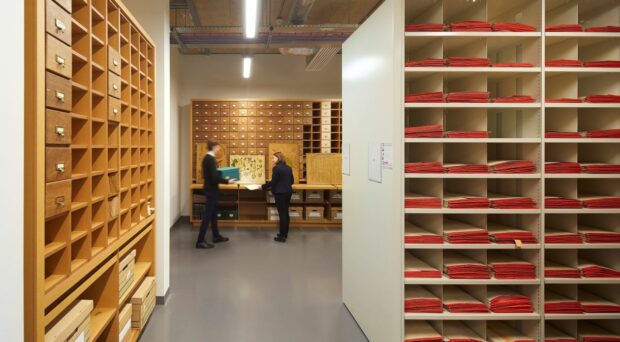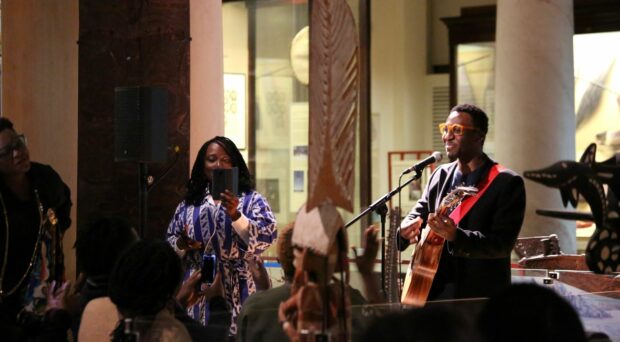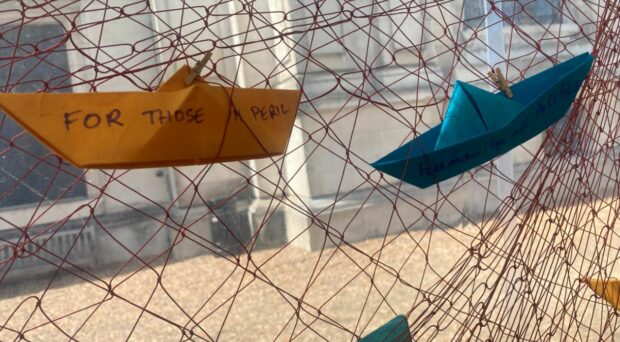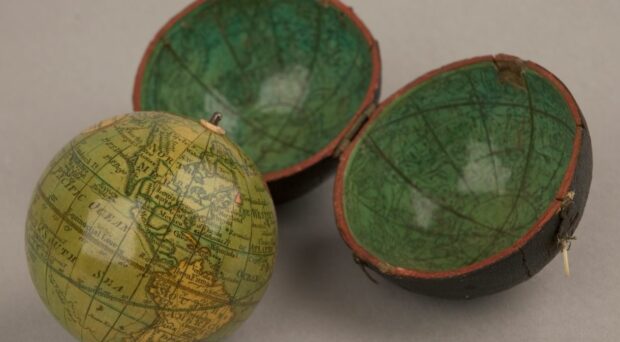Kettle’s Yard holds the largest collection of Alfred Wallis artworks in the world. Wallis is one of our visitors’ favourite artists and we’re consistently delighted by the kind words we receive about our collection and the exhibitions of his paintings.
In advance of our reopening we’ve been conserving thirty five pieces by Wallis, and are hosting exhibitions of his seascapes at the Fitzwilliam Museum and as part of the King’s Lynn Festival. His simple scenes have something enigmatic about them, and fascinate both young and old viewers. But what is it about Wallis that makes him so beloved?
In 2013, ‘Art Everywhere’ asked the public to choose their top ten favourite British artworks, that would then replace advertisements and be displayed on billboards across the UK. Votes came from not only the UK, but from international audiences who were also encouraged to have their say on the best art from around the country.
The final list included many renowned artists such as JMW Turner, Francis Bacon, John William Waterhouse and Cornelia Parker, the only living artist selected. Sitting at the seventh spot was Alfred Wallis’ ‘Five Ships – Mount’s Bay’, 1928, one of over 70 works by the artist belonging to the Kettle’s Yard’s collection.
Longtime admirer, Ben Nicholson observed that Wallis’ paintings represent “something that has grown out of the Cornish seas and earth and will endure.” And Wallis has certainly endured, with a timelessness in his seascapes that have captured the essence of coastal environments. Ignoring perspective, he paints objects in a scale relative to their importance in the scene, not realist in style, but perhaps a more lifelike picture of the bustle and vibrancy of port towns. Speaking with Nicholson, Wallis referred to his works as experiences, not pictures. As Kettle’s Yard Director, Andrew Nairne puts it, “his ships, boats and harbours are deeply expressed and profound meditations on life.”
Who was Wallis?
After the death of his wife in 1922, Alfred Wallis turned to painting as a way of fending off loneliness. He had worked as a fisherman, and as a scrap-metal merchant in St. Ives and so was accustomed to living and working by the water. He captured these environments with an intriguing authenticity, free from romantic idealism. Artuk.org claims that it is “the unselfconscious vigour” of Wallis’ painting that Nicholson and Christopher Wood admired.
In ‘Real and True: the innocence and experience of Alfred Wallis’, an essay by Michael Bird, Bird points out that even when hung beside the popular work of Ben and Winifred Nicholson Wallis’ paintings have an uncanny ability to upstage the competition and that “sceptics and fans alike gravitate towards them”.
What is it about Wallis?
As the new Communications Assistant at Kettle’s Yard, I am surprised nearly every day by just how many people seem specifically attracted to the Wallis’ in our collection. It’s clear from online comments that our followers love Wallis. One says that they are always impressed by the “simplicity and colours” while another remarks that Wallis’ work is “so zen”. In 2016, Kettle’s Yard partnered with the University of Cambridge Primary School for a week of art activity based around Wallis’ artworks. Artist Kaitlin Ferguson worked with us on one of our workshops and said “Alfred Wallis is one of my favourite painters and one of the things I love most about his work is how accessible it is for children; creating triggers which let their imaginations run.” The intergenerational love of his work is clear, and somewhat unusual.
On the day that Wallis died, Ben Nicholson wrote, “I don’t think a good Wallis is representational, it is simply REAL?”. The force of this statement, poised as a question, encapsulates the strange combination of imagination and documentation in Wallis’ work. In a letter to Nicholson, Wallis claimed that “inlan [inland] Towns is The Best for sellin’ ships”, another way of saying that his seascapes were preferred by those who do not live by the shore.
Where’s Wallis now?
Kettle’s Yard holds the largest collection of works by Alfred Wallis and they are some of the most loved works in the collection. The House and gallery have been closed for redevelopment since 2015. This has given us the opportunity to share our collection with audiences who may not have had the chance to visit us in Cambridge. Since closure we have presented Wallis’ work at Jerwood Gallery, Modern Art, London, Heong Gallery, The Hepworth Wakefield and the Fitzwilliam Museum.
Earlier this year, with incredibly generous donations from Friends and supporters of Kettle’s Yard, we raised the funds to carry out much-needed conservation work on some of our Wallis collection. Many of the paintings are on unsuitable backing and poorly framed. This funding will enable thirty-five artworks from our collection to have asbestos backing carefully removed, as well as being reframed, in time for our reopening, early next year.
We currently have a selection of Alfred Wallis and Christopher Wood at the Fitzwilliam Museum, which will be on display until 27 August 2017. We are also delighted to announce that an exhibition of Wallis’ works depicting ships and boats will be included in the King’s Lynn Festival in July. Kettle’s Yard Director, Andrew Narine will be speaking as part of the Festival on 15 July 2017 about this exhibition.
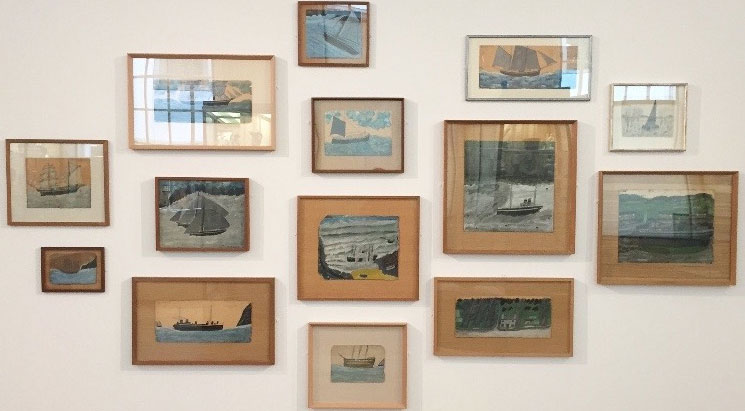

The ‘Art Everywhere’ billboards have been taken down, so you are no longer able to be surprised by Wallis in public. However, you don’t have long to wait, the UK’s seventh favourite painting, ‘Five ships – Mount’s bay’, will be displayed proudly in the House when we reopen early next year. If you can’t make it to the Fitzwilliam Museum this summer, or to the exhibition at the King’s Lynn Festival, to see our latest Wallis exhibitions, I recommend the seaside, the only real alternative.
Find out more about our collection, and our latest exhibitions and events from Kettle’s Yard, on our website: http://kettlesyard.co.uk
Photos: Kettle’s Yard, University of Cambridge




